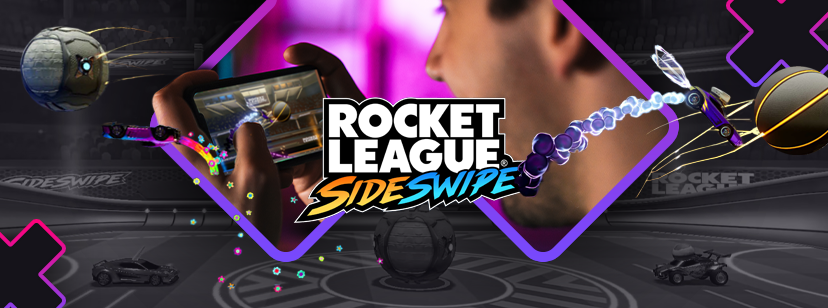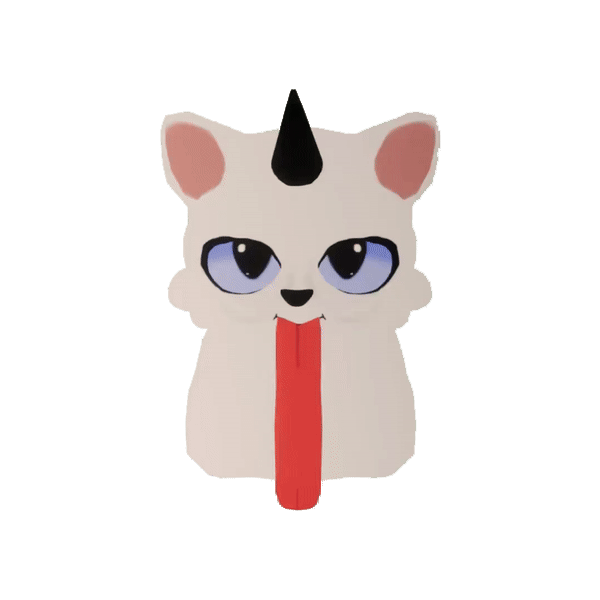Some games teach the player through explicit tutorials. Others invite the player to experiment. Rocket League Sideswipe leans toward the latter—presenting the basic mechanics in a short tutorial and letting them experiment afterward. With a strong, intuitive physics system and mechanics that are easy to learn but hard to master, the game rewards players through experimentation. Every mechanic connects with another, rewarding curiosity, muscle memory, and strategic thinking. How did they make all this complex systems and mechanics work together? Let's put the scalpel in and analyze it.

The king of movement response.
RL Sideswipe needed to transfer the movement from its 3D predecessor to the 2D plane on a mobile device. This required simplifying player input while maintaining depth—and the results are extraordinary. It keeps the original game’s essence, with a feel of responsiveness and precision. We can differentiate two types of movement:
On the ground
Ground movement is simple: a virtual joystick controls direction and speed. But let’s break down what makes it so smooth:
- Moving left to right rotates the car smoothly if the joystick is turned within the bottom 180°.
- A quick flick reverses direction almost instantly
- The car won’t flip over.
- Tilting the joystick in the upper 180° makes the car rotate to point in that direction (useful for jumps or hitting the ball). However, within the lower 180º arc, the car maintains its current orientation and simply moves parallel to the ground, avoiding flips at all costs. This design choice is one of the main reasons the car’s movement feels so smooth.
On the air
While airbone, the car's movement obeys momentum — YES SIR!.
- The joystick now rotates the car 360°, allowing precise adjustments and incredible shots.
- Air control is limited—movement depends more on inertia than input.
- The car moves slightly with player input, specially when tilting downward, a critical technique for repositioning and refilling boost.
From these simple mechanics, advanced aerial maneuvers emerge naturally.

Basic Mechanics: Flying, the roof is the limit.
Jump
The introductory mechanic: tapping the jump button propels the car upward. Basic stuff, but there is some things to take into account.
- The jump maintains the momentum stored in the car.
- This jump can only be used on ground. When the player is airbone, the flip or double jump will activate instead.
Flip or Double Jump
This move is only available while the car is in the air. It makes the car rotate 360 degrees and gives a small boost in the direction you’re holding the joystick. Neutral joystick? It boosts upward (roof direction). Super useful for advanced mechanics (more on that later) and general gameplay—whether smashing the ball or recovering fast when you’re out of boost.
Flip Reset
Whenever the bottom part of the car touches a surface, the flip jump will reset. The game indicates this with a white VFX and a sound. Surfaces that reset the jump include the ball, and since this happens frequently, players sometimes won't even notice they have another flip, adding another layer of complexity that experienced players will use as an advantage.

This mechanic pairs well with another one we’ll discuss later (little spoiler: Snap Air Roll). The game excels at combining mechanics to create plays that are visually appealing to both players and spectators.
AirRolls
Snap AirRoll
Whenever the player taps the right side of the screen twice, the car will flip 180º. This mechanic might seem non-functional since the car always lands on its wheels, preventing the player from getting stuck or losing game fluency. However, when combined with other mechanics, such as Flip Reset, this ability becomes one of the best techniques in the game for high-level players, allowing for beautifully executed plays. Just look at these awesome plays that I wasn't able to reproduce myself; this requires a lot of practice and great timing.
There is an in-game option to activate it with just one touch on the right side of the screen, making this mechanic easier to use. This makes me think that, after some testing, the designers realized it was hindering gameplay for new players or those less accustomed to touch devices.

Free Air Roll
For me, this is one of the most interesting mechanics. It's so interesting not because it changes how the car behaves. The controls remain the same - it doesn't use less boost, it doesn't improve car control, and it doesn't let you hit the ball harder. It literally does nothing different, yet players feel different when using it.
What's wild is that the ball seems easier to control this way. Probably because players get a cleaner view of the hitbox - when the car's rotating, they see a simple cylinder instead of the car's weird shape. This is fascinating proof of how animation affects gameplay feel, even when the physics stay exactly the same.
And last but not least? It just looks **cool**. Scoring while your car spins like a torpedo feels amazing to watch. Players totally use this flex to show off their skills."
Advanced Techniques: How new gameplay emerges
A great mechanic on its own is fine, but when mechanics interact with each other, a game truly stands out. As we've seen, players discover ways to combine mechanics, integrating them into their own gameplay style. These new techniques emerge naturally as skill increases.
Before we talk about shots, I want to highlight some other mechanic combinations that players have discovered by themselves.
High Jump
This might be the result of an unintended jump + reset interaction, but it can be useful in certain scenarios. When the car touches the ground, you can increase the jump force by timing it correctly - jumping just as the car lands. This lets players reach the roof without wasting boost. It's difficult to execute, but the reward and satisfaction are huge when you nail it. The car keeps its falling momentum and converts it into upward motion.
Turtle
Holding jump when landing cancels the auto-flip, leaving your car upside down but still mobile with all its momentum. It's mainly a stylish move - letting players express themselves through movement. Fun to watch, and perfect for taunting opponents.

The art of shot: How to shoot, without a shoot button.
As we've seen, all gameplay emerges from basic car movement. This is what makes the game so great - it perfectly mimics how football feels in real life. There's no shoot button, just like there's no magic button to kick a ball in reality. It's all about timing your jumps, adjusting your position, and nailing the perfect contact - just like flexing your knee and placing your feet right in actual football.
So, yes, combining every mechanic that we have seen, we players creates different types of shots.
Regular shot
The simplest, players will use it a lot, specially players with no practice. Just drive into the ball, the shot will inherit the car’s momentum.
Red shot
Timing the double jump to hit the ball with the front part of the car. This sends the ball forward with additional force.
Purple shot
It is the combination of a neutral double jump (jump without moving the joystick) and putting the car with the wheels on the ball. This propels the ball in the direction of the low part of the car. There is a sweet spot where the player can make a strong shot. The closer the ball, the stronger the shot. The result is a balanced mix of power and control.
Gold shot
Executed by flipping away from the ball with the car's rear near it. Similar to the purple shot, the player has to find the sweet spot for maximum power. Good for both offense and defense — hard to time and risky, but the style points are undeniable.
Closing Thoughts
Rocket League Sideswipe’s systems are a masterclass in intuitive design. When designing new mechanics, a good rule of thumb is to see if they interact well with the existing ones. There’s no guarantee that something will work until it’s tested, but strong interactions significantly increase the chances of success. And RL is the king of mechanical interaction.
The mechanics start simple but unfold into a complex web of movement, positioning, and strategy. No mechanic exists in isolation. Every input connects to another, forming a continuous loop of skill expression. The best players aren’t just reacting; they’re predicting, adapting, and refining their control over the game’s physics. And these physics sacrifice realism to give players better control over the car.
A give for you
You made it this far, huh. Here is little give for you. Look at this play at this minute. It's amazing, isn't it? We share this feeling with almost everyone in the comments. And that's what makes this game so special.
